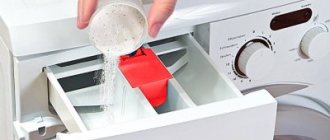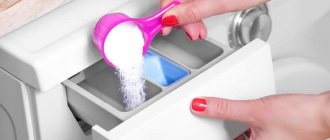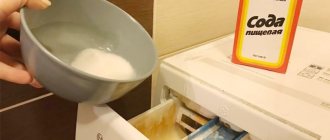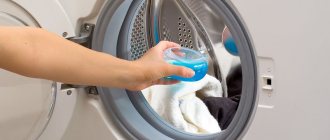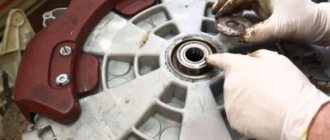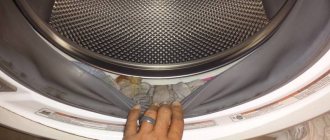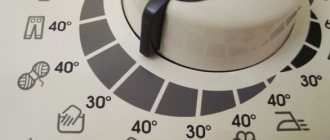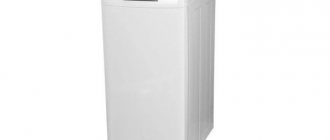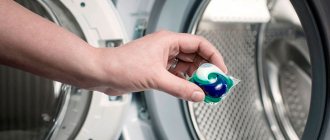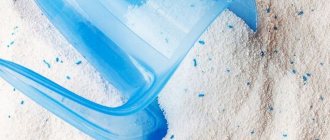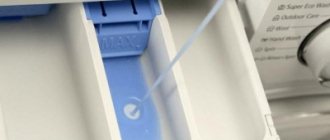Each washing machine has an approximate service life. With intensive, everyday use of the washing machine, the operating period will be about 8 years, with less frequent and gentle use - 15 years. In addition, every year more and more functional and modern washing machines are produced, so even with normal operation, sometimes you want to replace the machine.
What to do with an old machine that has become unnecessary as a result of breakdown or obsolescence? You can simply move the device to a landfill, but this option is not suitable for business users. The unit can be disassembled, some parts can be left, some can be sold, and the rest can be turned over for metal. Let's figure out how much copper can be detected in a washing machine.
Looking for copper in an old machine
First of all, I would like to clarify that the machine contains little copper. Therefore, before you start disassembling the device, compare the cost of personal time and the amount of potential earnings. Firms involved in the purchase of non-ferrous and ferrous metals offer about 360 rubles per kilogram of copper. Inside the electric motor you can find from 0.7 kg to 1.2 kg of copper wire, that is, disassembling the motor will cost you about 250-400 rubles. In addition to the engine, you can find copper in cables and microcircuits, but there is very little of it in these elements.
If you look closely, you can find particles of gold in the parts of the washing machine, but they are so small that it is impossible to extract the precious metal at home. When you roughly understand how much revenue you can get from handing over copper wire, you should decide whether it is profitable to disassemble the automatic machine or whether it is preferable to hand over it entirely.
What parts of the washing machine are of interest?
In washing machines that have become unusable, it is best to determine this amount experimentally by disassembling the machine into parts and weighing the resulting materials.
So, for example, in an old Volna 75 car with a 600-watt engine power, 47 grams of copper were found in the power cord; in the electronics box there were silver contacts on a copper base, which added a certain amount of copper.
The control box had a lot of copper wires, a copper coil, a relay with copper plates inside and copper rivets, which amounted to 136 grams . The most copper was in two engines; the result was 1500 grams of pure copper.
During disassembly, 800 grams of copper were found in the LG engine. An old machine called “Vilnius” produced 650 grams of copper, and “Malyutka” 400 grams. From the drain pump from a Samsung washing machine, the amount of copper in two coils was 82.6 grams.
Copper is used in many washing machine components. In electric motors it is used in commutators, winding wires and cables . If the washer is a “smart” model, then copper can also be found in the processor, but it is quite difficult to remove it from there.
When looking for copper in your washing machine, you should not ignore the internal wiring and electrical cord with outlet. In general, an electric motor (and it is the main supplier of copper) can contain from 700 grams to one and a half kilograms of copper, which, translated into prices for recyclables receivers, will be approximately 400-600 rubles.
What is the most profitable way to sell inoperative equipment?
The ideal solution would be to sell the washing machine not for scrap, but to sell its individual parts. This option is suitable if you have a fairly running model of the unit, and the main elements of the system remain intact: the drain pump, motor, main control module and others. You can remove the components yourself and resell them to craftsmen involved in the repair and restoration of SMA .
If you don’t have time to bother with disassembling, you can use the services of special companies that buy and remove washing machines. Depending on the model and serviceability of your car, resellers can offer you 500 rubles or more. The advantages of this method of marketing washing equipment are obvious:
- reselling the washing machine for spare parts will be more profitable than selling it for metal;
- personal time and effort are saved, since the main work is transferred to someone else’s shoulders;
- You won’t have to drag the machine across the floors yourself – the resellers called will do everything themselves.
Thus, instead of searching long and hard for copper in the engine, you can simply sell the machine in parts. Perhaps this method will have even greater profitability.
Table of copper content in electric motor
In industrial production, electric motors play a vital role, as in many other areas of human activity. The operating principle of these devices is the conversion of electrical current into mechanical energy. It contains a large number of different materials, namely copper. Therefore, many users have a question about how much of this material is contained in electric motors.
Device parts containing copper
Copper is used to make many electric motor components, such as the commutator, winding wires and cables. That is why, when making them, you need to know the amount of copper that turns on the electric motor. Its quantity can be calculated by knowing the mass and power of the motor. You can accurately determine how much copper an electrical unit contains if you have data on its power and weight. At voltages of 220 and 380, the mass of this metal in the engine is different.
Winding wires
Winding wires are needed to repair and rewind electric motors. For this purpose, the metal is specially contaminated in order to reduce the inrush currents of the system. The windings have a round or rectangular cross-section, the type of which depends on the characteristics of the wire material, as well as on the type of insulation. As a rule, winding wires are made from copper parts with enamel or fiber insulation. The correct selection of these components is very important for the repair of an electrical unit. They are selected taking into account moisture resistance, frost resistance, susceptibility to heat, mechanical strength and chemical resistance. Winding wires are usually sold in drums, coils or spools. Each reel must have a label with the name of the manufacturer, brand, as well as size and weight. The last parameters are determined based on a special table.
Alternative uses for an old typewriter
We suggest considering all possible ways to get rid of equipment that has become unnecessary. There are quite a lot of them. Some sales options allow the owner to receive income, while others, on the contrary, involve additional costs. How can you “free yourself” from the machine gun.
- Dispose of the unit according to all rules. Household appliances are transported to a separate landfill; before this, the devices are finely crushed using a special apparatus. This method is unprofitable, since you will have to pay about 2 thousand rubles for the services of the carrier and the procedure for recycling the washing machine.
- Place a sale ad on a classifieds website or in a newspaper. This method is applicable if the machine is functioning properly. Having offered the unit for little money, about one and a half to two thousand rubles, there is no doubt that many people will respond who want to buy it.
- Take it to a hardware store. Many large sellers from time to time carry out an interesting promotion “We exchange old equipment for new ones.” By handing over your unwanted washing machine to the store, you will get a good discount on new equipment. This method can be the most profitable of all.
Is there a lot of copper and aluminum in the washing machine?
Non-ferrous metal is present in every washing machine, and after the machine breaks down, it can be removed and sold. True, the proceeds will not have many zeros - there is not much copper and aluminum in the unit. In order not to waste time in vain, it is worthwhile to correlate the efforts made with the potential “production” in advance.
- As for copper, the electric motor of a washing machine contains approximately 0.7-1.2 kg (the final weight depends on the model). In general, with a price tag of 360 rubles. per kilo you can get a maximum of 250-400 rubles.
- Aluminum is also present in the engine housing. The total weight of this non-ferrous metal is usually no more than 0.7-1 kg. They buy it for 50-70 rubles. per kilo.
- In theory, there are gold particles in the washing machine. But practice shows that this is impossible to do in apartment conditions: special knowledge and equipment are needed.
In the washing machine there is a maximum of 470 rubles worth of non-ferrous metal.
It is easy to calculate the approximate benefits of disassembling the washing machine for non-ferrous metal. It is recommended to remember this figure and compare it with other options for “reselling” the machine. There are three ways: sell off valuable parts, try to sell the entire equipment, or get a discount on the purchase of a new unit.
Various options
There are several ways to get rid of your old machine:
- Dispose of as household appliances. It must be said right away that this option will cost you 1500-2000 rubles. The fact is that household appliances are disposed of in special landfills, after being shredded. The funds will be used to pay for transportation and the processing service itself.
- Place advertisements in a newspaper or on the Internet. There are a large number of people who want to take away their old washing machine. You can consider selling it (if the machine is in good condition) or giving it away for free.
- Return it to the store. Of course, we are not talking about returning it. Many household appliance stores hold promotions in the “Change new for old” format.
- Donate a car to an orphanage. If your washing machine is still operational, you can donate it to an orphanage. As a rule, such institutions always need help.
- Sell your washing machine for scrap.
In fact, the latter method is most often used - washing machines are sold for scrap. This is due to the fact that most old cars are thrown away due to malfunctions and it is impossible to sell or donate them. Then scrap metal collection points come to the rescue.
Selling a washing machine for scrap - how much will we get?
According to statistics, the average service life of a modern washing machine is limited to a period of 5 to 8 years. When purchasing a new unit of household appliances, the relevant question is where to put the old unit. Depending on the condition of the old washing machine, there are several options for solving the problem.
- It is easy to sell serviceable but obsolete equipment through free classifieds sites on the Internet with the obligatory condition of self-pickup.
- You can give away a faulty washing machine for free by posting a corresponding advertisement on the Internet.
- Use the services of a company for recycling large household appliances. Typically this service is provided for a fee. A fee will be charged for transportation and subsequent disposal of the unit.
- Take it to a large hardware store as part of a special promotion aimed at recycling old appliances. In this case, the responsibility for delivering a unit of household appliances to the sales floor falls on the owner of the washing machine.
Article on the topic: Atlant or Indesit washing machine, which is better?
Owners of an old household appliance receive the maximum benefit by handing over the washing machine as a secondary raw material to a scrap metal collection point.
Selling a washing machine for scrap
So, you've decided to sell your old washing machine for scrap. Initially, you need to decide how to deliver it to the collection point. This can be done in several ways:
- Take it out yourself. In this case, you will need to either independently or with the involvement of friends or acquaintances, load the old washing machine into the car and deliver it to a scrap metal collection point. When choosing this option, it is worth considering that there will be fuel costs. It is also necessary to ask someone for help.
- Use the company's services. By choosing this option, you won’t have to carry anything anywhere. The service will send a special car with loaders who will independently deliver the old washing machine to the collection point. It is worth noting that there is an additional charge for this. As a rule, the money received for the machine is enough to cover these expenses, but you are unlikely to make a profit.
It is impossible to clearly identify the best method. Both options have the right to life.
Sell your washing machine for scrap
Washing machine for scrap metal. Unfortunately, nothing in our world lasts forever. This also applies to household appliances, and in particular washing machines. Statistics show that the average lifespan of a washing machine is 5–8 years, taking into account intensive everyday use. Often repairs will be quite expensive, and no repairman will give you a guarantee. It’s easier to buy a new car, and an old one... But where to put the old washing machine? More details below.
How much money if scrap metal?
Video - How much does a washing machine cost if its metal parts are scrapped:
The price at which you sell your washing machine directly depends on its weight. On average, washing machines weigh from 50 to 70 kg. The main mass of the machine is provided by counterweights.
Counterweights are elements that artificially weight a washing machine. They are hung in order to add more weight to the washing machine, to prevent it from swinging during the washing process. Made from concrete.
Main metal elements of the machine
- Electric motor. You can hand it over whole, assembled, and receive a good reward. Also, most machines use copper winding, so if you spend time disassembling the product, you can extract copper wire from it and use the rest for ferrous metal.
- Drum. In most cases, washing machine drums are made of stainless steel with a fairly high nickel content. Therefore, a fairly massive drum can be sent for scrap. However, it must first be disassembled and cleaned of other parts made of ferrous metal.
- Frame. Modern cars are most often made of plastic, and metal casings are almost never found. However, there may still be various stiffening ribs and other metal structures inside, which can also be used for scrapping.
- Various small parts that will be added to the body: springs, fasteners, etc. Their weight will not be so significant, but will also allow you to receive some reward.
- Electrical equipment: wires, wiring inside the machine, etc. Their weight is also not so significant, and often the wire from the car remains in good condition, so it can be reused for its intended purpose.
- Lead weights and weights. They are not found in all cars, but they are still quite common. To dampen vibrations, many manufacturers use a weighting element - a container with lead weights, which is placed at the top of the machine. It can be discovered and also scrapped.
Non-ferrous metal in a machine. Is it worth disassembling?
In the “heart” of the washing machine - in the electric motor - there is a little copper. About 200–300 gr. A kilogram of copper costs about 200 - 240 rubles/kg. Therefore, you can get an additional 70 rubles for the winding.
You can also sell the drum separately - it is made of stainless steel. Its weight, depending on the model and machine, ranges from 2.5 to 5 kg. For 1 kilogram of “stainless steel” at a recycling collection point you will be offered 50–60 rubles. So it turns out that such a drum will add an extra 100-300 rubles to your wallet.
If you decide to scrap a “smart” model, then there will also be a few grams of copper in the processor. But the process of fishing it out of the processor is quite labor-intensive. And it is quite impractical to get copper from there, due to its low content.
We can conclude that you can disassemble a washing machine, but only if you have a desire to earn a few hundred more and an hour of free time.
Which washing machines contain copper and how much?
Copper is found in almost every washing machine. Its amount depends on the power and number of revolutions. In old washing machines such as “Malyutka” or “Siberia” there is not very much of it, but in powerful units its weight exceeds a kilogram.
The amount of copper in washing machines is determined by the power of the motor (electric motor) and its type :
- An asynchronous motor in cars is not used in modern units. When performing 2800 revolutions per minute, it reaches a power of 180-360W.
- The collector type at 11500-15000 rpm reaches a power of 300 to 800 W.
- The inverter type of engine at 16000-20000 rpm reaches a power of 400-800 W.
For a more accurate idea of the amount of copper in various washing machines, depending on the motor power, you should familiarize yourself with the following table , where the power is given in kilowatts and the number of revolutions per minute is indicated:
| Power | 8/750 | 6/1000 | 4/1500 |
| 0,09 | 0,543 | 0,430 | |
| 0,25 | 0,95 | 0,84 | 0,60 |
| 0,55 | 1,33 | 1,22 | 0,95 |
| 1,1 | 1,91 | 1,54 | 1,36 |
| 1,5 | 2,27 | 1,93 | 1,46 |
| 3 | 3,50 | 3,02 | 2,87 |
| 5,5 | 92 | 75 | 55 |
| 7,5 | 7,32 | 4,99 | 5,30 |
| 15 | 11,7 | 9,26 | 10,4 |
| 18,5 | 13,3 | 12,1 | 11,3 |
| 22 | 14,53 | 15,9 | 13,20 |
The amount of copper contained in the wires is determined by the cross-section of the wire and is recorded in the following table:
| Wire cross-section mm2 | Copper weight in kg |
| 0,75 | 7 |
| 1 | 9 |
| 1,5 | 13 |
| 2,5 | 22 |
| 4 | 36 |
| 6 | 53 |
| 10 | 89 |
| 16 | 142 |
Summing up
In conclusion, I would like to say that the future fate of the machine, after purchasing a new one, is chosen by each owner independently. Depending on its condition, it can either be sold, donated, or sold for scrap. Of course, you can leave the old washing machine at home as a cabinet, but this option will suit few people.
When the machine works from repair to repair or fails completely, the user has no choice but to buy a new unit. But what to do with the old one? The easiest way is to simply throw it away, but some enterprising citizens are thinking about a different perspective. Is it possible, for example, to sell a washing machine for scrap and get some money?
How much copper is in a washing machine
Each washing machine has an approximate service life.
With intensive, everyday use of the washing machine, the operating period will be about 8 years, with less frequent and gentle use - 15 years. In addition, every year more and more functional and modern washing machines are produced, so even with normal operation, sometimes you want to replace the machine. What to do with an old machine that has become unnecessary as a result of breakdown or obsolescence? You can simply move the device to a landfill, but this option is not suitable for business users. The unit can be disassembled, some parts can be left, some can be sold, and the rest can be turned over for metal. Let's figure out how much copper can be detected in a washing machine. Article on the topic: Washing machine whose patent
We rent by total weight
Ferrous metal collection points accept cars for scrap by their total weight. As a rule, you won’t be able to get a lot of money out of this, but you can still get something. First, the owner of the machine needs to decide how to deliver the product to the collection point. There are two options.
- On your own, that is, either alone or with the help of friends, relatives or acquaintances. You need to load the car into your own car and take it to the delivery point, where an employee will take it from you and give you money. In this case, you will only spend money on gasoline, and the benefit depends on how long it takes you to drive to the nearest scrap metal.
- In the second case, you can use the services of a special company that will bring a car with loaders to your home. They will take the unit themselves and load it into the car, and then take it to the scrap collection point. Very convenient and comfortable, but, nevertheless, not free. There is a high probability that the money raised will only cover transportation costs, but nothing more.
It is difficult to say unequivocally which option is most acceptable. Both have a right to exist. Now you need to calculate how much money you can earn by renting out one average washing machine. The price of the product on the metal market will depend directly on the weight of the unit . Considering that the body is made partly of plastic, counterweights play a major role. Thanks to them, the washing machine can reach a weight of 50 to 70 kilograms. The purpose of the parts is to keep the washer from moving excessively during operation.
Important! In most washers, these parts are made of concrete, although there are particularly rare models with cast iron counterweights. Therefore, if you are lucky enough to be the owner of just such a car, then you can earn some good money.
But, of course, concrete counterweights are not accepted for scrap metal. Therefore, their weight must be subtracted from the total weight of the washer. Thus, in Moscow the price per kg of ferrous metal is about 12-15 rubles. A machine with cast iron counterweights can bring from 840 to 1050 rubles. But a model with concrete components will weigh 20-30 kilograms and can bring the owner only 360-600 rubles.
How to remove copper from a washing machine?
Before weighing and calculating the profit, it is necessary to remove the copper from the motor and other parts of the washing machine.
To do this, you need to disassemble the electric motor using special tools : circular saw, sledgehammer, pliers.
First you need to saw and open the body, then cut off the winding.
To form a copper lump, it is appropriate to place small and thin parts on the inside, and strong and thick parts on the outside. If firing was used for extraction, then under no circumstances should the copper be cooled with water, otherwise the metal may crumble.
To properly extract copper from a washing machine motor, use the following algorithm :
- Removing the cover and releasing the fasteners located on the body.
- Removing bearings that are made of metal but do not contain copper. They will be assigned to the group of the corresponding metal.
- Opening the housing and removing the rotor.
- Removing the back cover and dismantling the shaft.
- Performing desoldering connections.
- Removing the copper winding.
Everything that is removed from the case is sorted depending on its composition and type. A pneumatic hammer with a chisel attachment is used to crush the aluminum manifold and electric motor housing. For convenience, copper-containing fragments are cut into small pieces (1.5-2 cm).
To extract aluminum, the rotor is heated to somewhere up to 7000 ̊C, it should be hot for about 1.5 hours, thus completely melting the aluminum rods from the rotor.
To make the process of disassembling the engine go faster, you will need a grinder and a sledgehammer. To gain access to the stator, the motor housing is cut in half lengthwise. You can immediately cut off that part of the copper winding that is visible.
There is also copper in the grooves; to remove it, you should burn the stator for about 90 minutes . Then they take needle-nose pliers and remove the remaining copper from the cooled stator.
If the motor is not very powerful, heating the stator can be done with a gas burner, directing its flame inward.
Once all the copper-containing parts are removed, they are cleaned of any remaining insulation, plastic debris, rubber, and anything else. The use of a pneumatic vacuum cleaner gun is appropriate here.
Only then is the pure copper weighed and its mass determined .
The power of the electric motor determines the mass content of copper. If you work methodically and skillfully, you can extract all the available copper elements, this will increase the chance of getting a higher price for them.
We will sort, sort and hand over
If in the previous paragraph we handed over the machine by total weight, that is, without sorting it into different metals, then in this section you will find a slightly different method. Instead of taking the entire unit to a collection point, you can disassemble it yourself and then sort the parts according to metal categories. For example, almost every machine has massive motors with windings containing up to 2 kg of copper, and in Moscow the price per kg of this metal reaches 360 rubles. You can also find other non-ferrous metals there. In general, you can earn some good money, but keep in mind that you will have to get really confused and spend a lot of time. Information about how much non-ferrous metal is in the washing machine on average:
- 1-2 kg approximately 432 rubles.
- 2 kg of aluminum – 160 rubles.
- 0.2 kg of zinc – 13 rubles.
- 20 kg of iron – 300 rubles.
- 0.1 kg of brass – 20 rubles.
If we add it up, we get around 925 rubles. Of course, this is more profitable than simply giving away the machine with its total weight. But it will take quite a lot of time, and it is still unknown which is more expensive. And, of course, it is obvious that the difference between revenues is quite small. Surely, residents of big cities would prefer to give away the machine for free, just to get rid of it and the hassle associated with it.
Is it worth the time?
It’s worth mentioning right away that it’s unlikely that you’ll be able to get rich using copper from a washing machine. Before taking on this venture, determine for yourself whether it is worth spending your time and energy on it.
It is better to hand over copper at points where both non-ferrous and ferrous metals are accepted. On average it costs 360 rubles/kg. Different electric motors contain about 1 kg of copper +/- 300 grams. Having disassembled the engine, you will earn about 250-400 rubles. Copper and even gold are also contained in other parts of the SM (wires or electronic elements), but in extremely small quantities.
Basic ways to get rid of old equipment
In general, there are many more ways to get rid of an unnecessary washing machine than it seems. All of them are different in terms of financial costs/profits, and in the amount of time and effort. Here is a list of the main options:
- Recycle. The bottom line is that you personally take your unit to a specially designated place, where you also pay 1500 - 2000 for the procedure. This money goes towards transporting the machine to a special landfill and the recycling service itself.
- Sell or give away for free. Of course, this can only be done if the device is still in good condition. Some people will be happy to come and remove the car themselves if you offer it for free.
- Give it to the store. This refers to various promotions like “Changing the old for the new.” You can save some money and get rid of the equipment.
- Donate to an institution. Orphanages and any other similar institutions gladly accept any help. Household appliances are never superfluous, so why not do a good deed if your machine is still in good working order?
Well, if the home helper has already outlived its usefulness, of course, the most profitable thing to do is to sell it for scrap metal; as you can see, the content of valuable metals is quite high. Even if it’s not very convenient to transport, it’s still better than paying extra for disposal.
How to sell a washing machine for scrap
There are several ways to recycle household appliances as secondary raw materials. The simplest of them would be to contact a specialized company that provides relevant services on a paid basis. In this case, it will not be possible to make a profit; the proceeds from the scrap will be completely spent as a service fee.
You can independently deliver the machine to a scrap collection point and hand it over entirely. This option will require the involvement of movers and delivery costs. At the same time, it will be possible to hand over it in total weight at the price of scrap ferrous metals, taking into account the high percentage of blockage. Considering the low cost of ferrous scrap, the benefit from such a deal will be minimal. The amount of profit in this case directly depends on the total weight of a unit of household appliances.
It should be noted that modern units have a plastic body and are not taken into account. The main weight of the device falls on the counterweights, which hold the machine in place during operation. It ranges from 50 to 70 kg. A counterweight was made in the washing machine, with the exception of older models, which sometimes used cast iron. Simple calculations allow us to conclude that the revenue from recycling a washing machine with a total weight will be from 350 to 600 rubles. This is at a cost of ferrous scrap of 13-15 rubles per kilogram. A model with cast iron weights will bring about 1000 rubles in profit.
Article on the topic: Zanussi Lindo 100 washing machine how to use
Independent dismantling of a household unit will simplify transportation and help extract additional profit from scrap non-ferrous metals.
Stainless steel tank
Stainless steel. A common material for making tanks for washing machines. It has been used for this purpose for quite a long time.
- Reacts well to contact with water - does not rust.
- This tank has increased strength and resistance to mechanical and chemical damage.
- Service life up to 100 years.
- The weight of a stainless steel tank will be greater than that of a plastic tank, so it produces more noise.
- Low thermal insulation of metal requires higher energy consumption.
- High price.
Provided the washing machine is equipped with such a tank, this is perhaps one of the elements that can outlast all other elements of the washing machine in terms of service life. When choosing a washing machine with a stainless steel tank, you should understand the following:
The steel must be of high quality, and the technology of its assembly and soldering is at the highest level. Only under such conditions will the tank really be durable and live up to expectations.
This will immediately affect the price. A washing machine with a stainless steel tank will cost more than, for example, one with a plastic tank.
Therefore, if they offer you a washing machine with a stainless steel tank at a lower price, then it is probably a low-quality unit and its service life will be short.
Will the revenue from scrapping the washing machine be significant?
Unfortunately, it is not possible to talk about the big money received for the returned residual parts from the washing machine. However, even the small money received for this unit will at least partially compensate for the purchase of a new one. After all, most often we simply throw away broken washing machines if they cannot be repaired.
This solution is most beneficial for enterprises where this equipment is used en masse. These are laundries, hotels and other establishments in which washing is an essential element of daily activities. There, industrial machines weigh much more, contain more useful metals, and therefore, when they are written off, there is an opportunity to capitalize well on their residual value.
